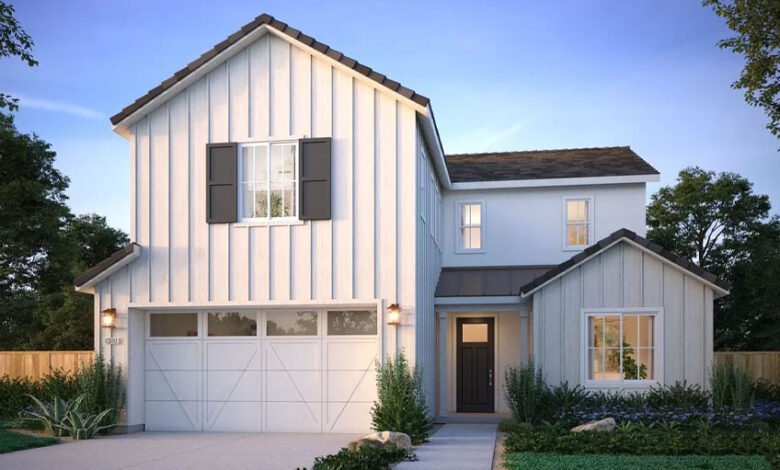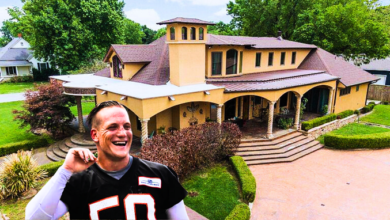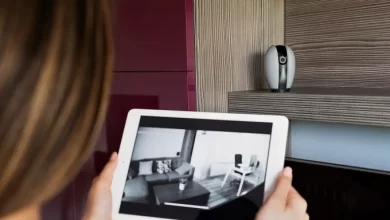Board and Batten Vinyl Siding: A Comprehensive Guide
Introduction to Board and Batten Vinyl Siding

Board and batten siding has been used in home construction for centuries, with early American colonists incorporating the unique vertical plank style into barns, stables, and homes. The aesthetic style features alternating wide boards with narrow battens, slats, or strips of trim, creating a rustic, layered wall surface.
While board and batten siding styles traditionally used solid wood planks, board and batten vinyl siding offers a modern, low-maintenance alternative. Thanks to advances in manufacturing and materials, vinyl replicas now realistically emulate the varied textures and wood grain finishes of classic board and batten while providing enhanced durability and weather-resistance.
As a lighter-weight option than solid wood or masonry alternatives, board and batten vinyl siding introduces new possibilities for renovations, additions, or new construction homes. This comprehensive guide will explore everything homeowners or builders need to know, from material variations to style options, installation and maintenance best practices. Weighing the pros and cons of vinyl versus other common siding materials, the piece also provides actionable insights to inform final product selections.
Understanding Board and Batten Vinyl Siding
What Is Board and Batten Siding?
The distinctive look of board and batten siding comes from the alternation of wide, flush-mounted boards (typically 4 to 6 inches wide) with narrower vertical strips or battens (usually 1 to 3 inches wide). Rather than a flat, uniform façade, the layers create dimension and visual depth with striking vertical lines.
Board and batten vinyl siding replicates this timeless aesthetic with modern vinyl panels. The “boards” consist of traditional clapboard planks or a solid sheet scored with plank lines. Pairing these panels with vertical vinyl battens completes the eye-catching board and batten appearance.
Key Materials for Modern Board and Batten Siding
While wood siding gives board and batten its historical roots, several modern siding materials now offer their own twists on the style:
- Vinyl siding – Affordable, simple maintenance, and available in myriad colors, textures, and plank dimensions. Specialty manufacturing processes recreate realistic wood grains and native stone aesthetics alongside flat, uniform colors.
- Engineered wood – Strand composite wood or durable solid wood panels bring attractive grains and wood hues in low-maintenance finishes.
- Fiber cement – A composite of cement, sand, and cellulose fibers can provide enhanced durability and fire resistance. It offers hidden fastener options to keep walls smooth.
- Metal – Lightweight steel with specialty finishes creates uniquely modern rustic aesthetics alongside durability. Color options range from bold to charmingly aged.
The Pros and Cons of Choosing Vinyl
As a lightweight, affordable, and versatile product available in a vast range of aesthetic finishes, board and batten vinyl siding makes choosing this striking vertical pattern simple and accessible. Homeowners weighing their exterior cladding options should compare the benefits and drawbacks of vinyl against natural wood or alternative siding products:
Pros
- Budget-friendly material and installation
- Highly customizable aesthetic
- Low maintenance needs
- Resists moisture, rot, and pests
- Insulating qualities for energy efficiency
Potential Cons
- Less durable than masonry options
- Extreme heat can warp panels
- Strong winds may damage lightweight material
- Shorter lifespan than high-end woods
- Not considered as aesthetically valuable
Understanding performance expectations for vinyl house siding can clarify whether vinyl suits your board and batten project. Review material comparisons below for deeper insights on how vinyl stacks up against top competitors.
Benefits of Board and Batten Vinyl Siding
Beyond affordability and low-maintenance, board and batten vinyl siding carries additional advantages for renovations, additions, and new builds.
Custom Aesthetics, Made Accessible
Rustic barn facades and colonial American architecture highlight the striking allure natural board and batten siding brings. The dimensional style makes a bolder statement than traditional flat panel or clapboard sidings.
Board and batten vinyl siding lets nearly any home tap into the custom, upscale look at a reasonable price point. Whether seeking a rustic statement wall or cohesive architectural theme, molded vinyl “wood” grain finishes supply charming options from cost-effective cedar planks to hand-split shake designs.
Specialized manufacturing means colors and textures once requiring arduous upkeep are now low-maintenance. Even exotic grains like Eastern White Pine or Western Red Cedar come in easy-care vinyl. Durable polymers ensure colors stay rich for years rather than weathering and fading rapidly.
Enhanced Thermal Performance
Properly installed board and batten vinyl siding provides homeowners outstanding insulation. With an R-value of around R-3, vinyl boards create a continuous layer trapping air against the structural sheathing. This extra barrier helps moderate indoor temperatures.
Battens offer opportunities to incorporate further insulation behind them. Rigid foam boards or spray insulation between battens and wall framing significantly improves thermal resistance—up to R-6 or more. Combined with proper caulking and weatherstripping, the multi-layered design keeps interior spaces comfortably temperate.
Sustainable and eco-friendly
Thanks to increasing use of recycled resins, board and batten vinyl siding offers an environmentally responsible alternative to volume wood demands. Rather than extensive logging and milling, recycled vinyl diverts waste from landfills into durable, quality home products.
Vinyl board and batten siding won’t rot, crack, or succumb to wood’s common enemies like termites. Products carry lengthy warranties against weathering, fading, and mechanical damage. Long-term performance means fewer resources ultimately wasted re-siding over a home’s lifetime. The long lifespans prevent toxin risks from lead paints and treatments too.
Types of Board and Batten Vinyl Siding
If board and batten catches your eye for improving curb appeal or creating a signature architectural style, several material options carry distinct budgets, advantages, and drawbacks. Comparing key traits makes selecting suitable board and batten siding easier.
Vinyl Siding for Clean, Comfortable Performance
As outlined above, board and batten vinyl siding offers outstanding versatility through specialized molds and manufacturing techniques recreating varied wood species, native stone shapes, historic profiles, and dramatic colors.
While its very light weight prevents using vinyl in high wind regions, the material performs well across most residential applications. Expected to endure for decades, vinyl costs 50% to 75% less than prestige wood options upon installation. Best of all, the material practically eliminates maintenance worries and upkeep—simply rinsing the vinyl occasionally keeps the vibrant aesthetic intact for decades.
| Pros | Potential Cons |
|---|---|
| Budget friendly, easy installation | Limited wind resistance |
| Highly customizable look | Vulnerable to extreme heat damage |
| Maintains rich color and finishes | Shorter lifespan than quality woods |
| Resists moisture, pests, and decay | Considered less valuable for resale appeal |
| Excellent thermal insulation |
Price Range: Approximately $2 to $7 per sq.ft installed
Natural Wood Brings Signature Character
For those insisting on authentic wood charm for their custom board and batten designs, several cost-effective species balance beauty and performance. Wood types come in a spectrum of price points based on cost, durability, and aesthetics.
Cedar and cypress naturally resist decay and insects like termites. Denser oak or pine boards require additional treatments but accept finishes well. Expect periodic maintenance needs like re-staining, sealing, caulking, or replacing warped planks. Quality woods also come with a steeper price tag for unmatched charm.
| Pros | Potential Cons |
|---|---|
| Prestige curb appeal | Requires periodic maintenance |
| Treated options resist decay | Costs exceed alternative sidings |
| Can last over 100 years | Damage prone without diligent care |
Price range: From $3 to over $10 per sq.ft installed
Fiber Cement Captures Modern Farmhouse Allure
For sleeker, uniform board and batten walls in contemporary hues, fiber cement boards supply charming contrast to vinyl grain finishes. Pairing cement composite boards with sleek metal (vs. vinyl) battens creates crisply defined shadow lines.
Fiber cement resists weathering nearly as well as vinyl but avoids a “plastic” aesthetic. It withstands impacts and offers fire resistance unmatched by vinyl competitors. Energy-efficiency falls somewhat lower than layered vinyl walls but fiber cement costs align more closely with premium vinyl pricing.
For modern farmhouse plans, discerning renovators may discover the fiber cement sweet spot combining livable performance, distinguished curb appeal, and competitive mid-range pricing.
| Pros | Potential Cons |
|---|---|
| Handles weather extremes well | Heavier than vinyl options |
| Long-term material integrity | Requires caulking and painting |
| Classy, uniform surfaces | Vulnerable to major impacts |
| Fire and pest resistant | Relatively inefficient insulation |
Price range: $3 to $6 per sq.ft installed
Installation and Maintenance
Deciding whether a DIY project suits your skillsets or if hiring a specialized siding pro makes better sense comes next. This overview explains vital steps for quality results. Regardless of who handles the work, best practices determine how well the board and batten finish enhances—rather than detracts from—property charm and value over time.
Hiring a Pro Brings Efficiency and Expertise
Due to the precision cutting, secure fastener placement, and fussy finish work involved, most homeowners hire professional siding crews. Qualified contractors know how building materials interact across seasons. They understand optimal spacing of fasteners and caulking for clean visual lines and water resistance.
With access to robust cutting tools, lifts, and trained teams, professional installations progress much faster than amateur efforts. Asking around for local referrals helps match reputable pros with your board and batten siding visions. With so many aesthetic and performance considerations, the right pro becomes a trusted partner translating concepts into durable reality.
| DIY Approach | Hiring a Professional |
|---|---|
| fulfilling for skilled homeowners | significantly faster project timeline |
| Didn’t Cut That Straight | consistently clean, precise material cuts |
| oops…those look uneven | skill finishing around windows, corners, and roof lines |
| Take Your Time | equipment access enables safe work at heights |
| $500 to $1,000 or more in rental tools/materials | $2,500 to $5,000+ for typical home |
Step-By-Step Installation Guide
While professionals rely on specialized tools and workflows, DIYers can follow the same careful approach for successful vinyl board and batten application:
- Remove existing siding and dispose properly
- Install house wrap per manufacturer instructions
- Install 1/2-inch furring strips vertically to form batten channels
- Fasten wide vinyl boards per manufacturer specifications
- Insert battens or metal strips into furring channels
- Maintain 1/4 to 1/2-inch gaps under window sills and at roof lines
- Caulk seams and gap allowances thoroughly
- Prime and paint battens as desired for enhanced dimension
Lacking experience assessing underlying moisture barriers or structural sheathing materials, first-timers should have an expert inspect behind original siding before proceeding.
Neglecting aspects like furring strip alignment or caulking risks allowing moisture penetration, mold development or insect intrusions behind the walls. Taking steps slowly, properly sealing elements, and painting for protection optimizes durability.
Maintenance to Prolong Beauty
Avoiding unnecessary maintenance motivated using board and batten vinyl siding in the first place. Its resilience to weathering, fading, and pests keep walls looking fresh year after year.
Occasionally rinsing vinyl with a garden hose keeps environmental dust or grime from accumulating. Harsh chemical cleaners may damage protective laminate surfaces and shouldn’t be used.
Check caulking periodically around windows, corner posts, and flashing for any cracks needing fresh sealant. This protects against invasive moisture causing structural damage. Catching minor issues quickly prevents extensive repairs down the road.
Design and Style Considerations
Beyond choosing alluring colors and grain patterns for planks, creative applications of board and batten vinyl siding design highlights on new builds and renovations. Varied orientations transform traditional looks for modern incarnations of the early American classic.
Emphasize Architecture with Strategic Board and Batten Placement
Many homeowners opt to clad entire structures in continuous board and batten vinyl siding. For others, selectively highlighting key areas builds appealing visual drama across varied surfaces.
Focus attention on Prime Design Elements:
- Entryway surrounds
- Front gables
- Dormers and cutouts
- Interior courtyard walls
- Second story additions
Blending board and batten panels on walls and gables – whether symmetrically or asymmetrically – creates intriguing contrast against shingle rooflines. Using board and batten only on new additions helps modernize and separate new spaces.
Go Bold or Go Home: Applying board and batten in bold hues contrasting softer hues on main volumes shouts “recent update!” loud and proud.
Modernizing Orientations
Traditions serve as cornerstones for innovation. Modern board and batten interpretations highlight this evolution:
- Continuing planks indoors for ceiling treatments
- Extending battens over garage doors
- Widening to extra wide barn style boards
- Flipping to horizontal orientation
- Layering contrasting colors and plank widths
Open floorplans allow interior wall treatments flowing uninterrupted across multiple living spaces.specially dramatic versions capture attention from the street with striking combinations of widths, colors, and profiles.
Case Studies and Real-Life Examples
Seeing successful installations provides helpful visual understanding on ways board and batten vinyl siding enhances actual homes’ aesthetics. Several regional projects offer glimpses of the transformation potential.
Gables Get Glam on 1970s Denver Rambler
A young Denver family hoped to inject renewed curb appeal and property value into their dated rambler without breaking the bank. Choosing two shades of board and batten vinyl siding panels re-skinned the prominent street-facing gable ends. The surprisingly affordable project took just three days start to finish!
“We couldn’t be happier with the updates! Our formerly dull home pops with charming character. The contrasting color patterns help downplay less appealing sides. We immediately noticed compliments and enhanced neighborhood pride thanks to this simple but dramatic change.”
“Shingles Who?” Dramatic gable updates garner immediate curb appeal
New England Barn Charm for Connecticut Cottages
Updating a neighborhood of 1980s cottage homes, board and batten vinyl siding helped unify the disjointed community aesthetics quickly and affordably. Rather than a hodgepodge of aging aluminum siding, faded clapboard, and oddly angled additions, uniform cedar-grain board and batten unified the irregular homes into a cohesive collection exuding New England barn charm.
“Using affordable vinyl let us economically rebrand the entire enclave in under a month! Energy bills dropped thanks to the insulating factor too. Value improved nearly 20% across the board.”
Bringing high-end barn style to modest neighborhood cottages
Where to Buy Board and Batten Vinyl Siding
Connecting with qualified local siding professionals streamlines material selection and ordering. They know reputable brands offering quality products that suit regional weathering needs. If tackling a DIY project, familiarize yourself with leading manufacturers.
Notable Vinyl Siding Brands
- CertainTeed
- James Hardie
- Kaycan
- Ply Gem
- Royal Building Products
- Mastic Home Exteriors
When reaching out for quotes, have key measurements available including total square footage needing coverage along with linear feet of batten strips needed. Supply photographs to clarify any unique structural considerations like multi-story heights or roof integration needs.
Ask about material lead times when ordering to avoid project delays. Manufacturers typically offer sample kits showing available textures and dimensions firsthand for final color approval.
Choosing durable, quality products suited to local conditions, and properly integrating flashing, caulking, and insulation during installation checks all the boxes for successful board and batten vinyl siding upgrades benefitting homes for decades to come.
Conclusion
This in-depth guide explored how board and batten vinyl siding introduces custom architectural styling to reach broader audiences. Highlighting the overall resilience and low-maintenance benefits unique to vinyl building products helps clarify why this specialty sector continues seeing strong interest and sales year after year.
For homeowners and builders alike, enhanced insulation properties contribute to energy savings and temperature comfort over time. Premium aesthetics once requiring intensive upkeep and vigilance now come in durable Vinyl requiring practically zero maintenance. The versatility of modern Vinyl manufacturing means even exotic wood species aesthetics boast reasonable price points.
Continued expansions into recycled resins widen product selection without further straining environment resources. Impressive material and installation warranties provide reassuring confidence in vinyl siding performance expectations.
Whether planning simple gable accents or extensive architectural overhauls, board and batten style captivates with rustic barn directives. Blending modern practicality with heritage charm, board and batten vinyl siding solutions inspire designers to balance innovation with tradition for today’s savvy homeowners.




